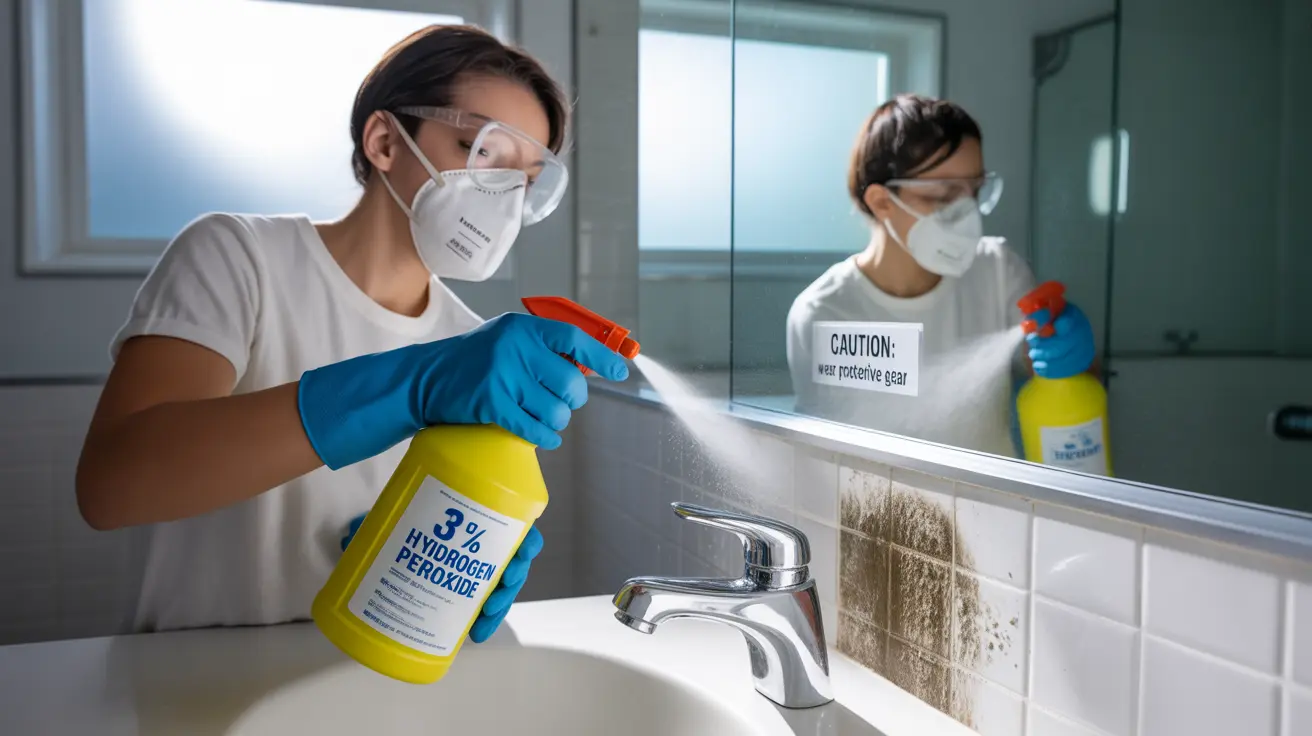When faced with mold problems in your home, hydrogen peroxide emerges as a potential solution that many homeowners consider. This common household disinfectant offers antimicrobial properties that can help combat mold growth, but understanding its effectiveness and limitations is crucial for successful mold remediation.
In this comprehensive guide, we'll explore how hydrogen peroxide works against mold, the proper methods for using it safely, and important considerations for different surfaces. We'll also discuss when to seek professional help and alternative solutions for stubborn mold problems.
How Hydrogen Peroxide Works Against Mold
Hydrogen peroxide (H2O2) functions as an oxidizing agent, breaking down into water and oxygen when it comes into contact with organic materials. This chemical reaction helps destroy mold cells and their spores through oxidative damage to cellular components.
The most effective concentration for mold removal is 3% hydrogen peroxide, which is readily available at most pharmacies. This concentration provides a balance between safety and effectiveness for household use.
Proper Application Methods
Surface Preparation
Before applying hydrogen peroxide to moldy surfaces, it's essential to:
- Clear the area of loose debris
- Ensure proper ventilation
- Wear protective equipment (gloves, mask, eye protection)
- Test the solution on a small, inconspicuous area first
Application Steps
For optimal results when using hydrogen peroxide:
- Pour 3% hydrogen peroxide into a spray bottle
- Saturate the moldy area completely
- Let it sit for 10-15 minutes
- Scrub the area gently with a brush
- Wipe clean with a damp cloth
- Dry the surface thoroughly
Surface Compatibility and Limitations
Hydrogen peroxide's effectiveness varies significantly depending on the surface material. While it works well on non-porous surfaces like tile, glass, and sealed countertops, its use on porous materials requires careful consideration.
Non-Porous Surfaces
These surfaces typically respond well to hydrogen peroxide treatment:
- Bathroom tiles
- Glass surfaces
- Sealed countertops
- Metal fixtures
- Plastic materials
Porous Materials
Exercise caution when using hydrogen peroxide on:
- Unsealed wood
- Fabric and upholstery
- Drywall
- Natural stone
- Paper products
Safety Considerations and Precautions
While hydrogen peroxide is generally safer than bleach, certain precautions are necessary:
- Never mix with other cleaning products
- Store in a cool, dark place
- Keep away from children and pets
- Use in well-ventilated areas
- Avoid contact with eyes and skin
When to Seek Professional Help
Consider professional mold remediation when:
- The affected area exceeds 10 square feet
- Mold appears black or dark green
- You have underlying health conditions
- The mold returns after treatment
- There's significant structural damage
Frequently Asked Questions
Does hydrogen peroxide kill mold effectively on all surfaces?
Hydrogen peroxide is most effective on non-porous surfaces but may have limited effectiveness on porous materials. Its success depends on the surface type, mold severity, and proper application methods.How should I use hydrogen peroxide to safely remove mold from my home?
Use 3% hydrogen peroxide in a spray bottle, saturate the moldy area, let it sit for 10-15 minutes, scrub gently, and dry thoroughly. Always wear protective gear and ensure proper ventilation.Can hydrogen peroxide completely eliminate mold and its toxins?
While hydrogen peroxide can kill surface mold, it may not completely eliminate deep-rooted mold or its toxins, especially in porous materials. Address underlying moisture issues to prevent regrowth.Is hydrogen peroxide safe to use on porous materials like wood and fabric for mold removal?
Hydrogen peroxide should be used cautiously on porous materials as it may cause discoloration or damage. Test in an inconspicuous area first and consider alternative treatments for these surfaces.What are the best alternatives to hydrogen peroxide for removing mold on porous surfaces?
Professional mold remediation services, specialized enzymatic cleaners, or vinegar solutions may be more suitable for porous surfaces. Some materials may require replacement if severely affected.




